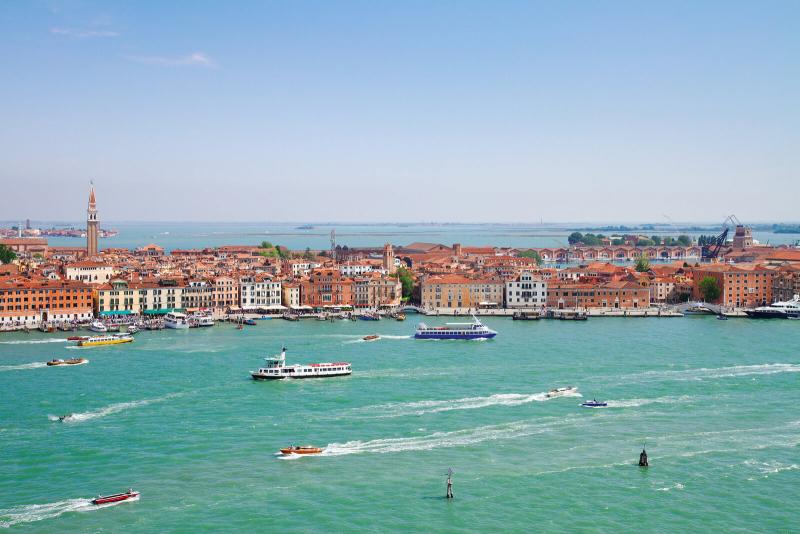The canals of Venice, the Baroque cities of Sicily’s Val di Noto, the picturesque views of the Cinque Terre, the medieval alleys of Ferrara: it’s not just (over)tourism to pose a threat to these, and others, Unesco World Heritage sites in Italy.
According to a study published by scientific journal Nature Communications, all those sites located in low-lying coastal areas of the Mediterranean are at risk from flooding and coastal erosion. “Until 2100, flood risk may increase by 50% and erosion risk by 13% across the region,” reports the study, conducted at the University of Kiel in Germany.
One third of the sites located, in part or in full, in what the study calls “Mediterranean Low Elevation Coastal Zone,” are in Italy (15). They include: Vicenza and the Palladian Villas of the Veneto, the Historic Center of Naples, Ferrara, City of the Renaissance, and its Po Delta, the Early Christian Monuments of Ravenna, the Archaeological Area and Patriarchal Basilica of Aquileia, Portovenere, Cinque Terre and the Islands, Genoa, Piazza del Duomo in Pisa, the Archaeological Areas of Pompeii and Herculaneum, the Amalfi Coast, Syracuse, Venice and its Lagoon, the Cilento and Vallo di Diano National Park with the site of Paestum, the Late Baroque Towns of the Val di Noto, and the Venetian Works of Defense between 15th and 17th centuries.

They could disappear by the end of the century, erased by coastal erosion or floods due to rising sea levels. The study cites the importance of keeping the global mean temperature increase below 2°C as planned under the Paris Agreement as essential to contain the magnitude of these events.
The research analyzes the state of 49 Unesco sites near the coast in 16 Mediterranean countries; Italy has the largest number of sites at risk (it is also the country with the world’s largest number of Unesco sites overall). Venice is the city most at risk from coastal flooding and erosion; the research cites the MOSE project, a system of submerged mobile barriers currently under construction, as an example of coastal protection which would not “interfere with the appearance of Venice and the fragile ecosystem of the lagoon as long as they are not raised frequently.” (MOSE has been harshly criticized by environmental and conservation groups, and by political forces for its costs of construction and maintenance; in addition, in 2014, 35 people including the former mayor of Venice were arrested on corruption charges in connection with the project).

Overall, according to the research, there are 37 locations in the Mediterranean at risk of flooding in the next 100 years, while 42 are threatened by coastal erosion; some are at risk of both.
To safeguard these Unesco sites, researchers encourage the use of artificial barriers that would not damage the aesthetic look of the places, or of natural barriers, for example by restoring coastal ecosystems to contain the advance of the sea. However, the study asserts, these efforts alone would be useless without a global commitment to respect the Paris agreement.





